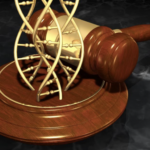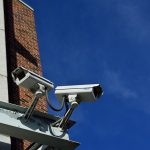How is Forensic Chemistry Used in Criminal Law?

Forensic scientists utilise a variety of techniques to assist in investigations, spanning such diverse scientific disciplines as medical pathology, ballistics, botany, serology and molecular biology.
Chemistry is also a discipline heavily used during criminal investigations. Here’s what you need to know about the specialisation of forensic chemistry, and how scientists look for chemical clues to assist investigations.
What Is Forensic Chemistry?
Forensic chemistry involves the use of analytical chemistry techniques for legal purposes. Analytical chemistry involves the use of instruments and methods to seperate, identify and quantify matter.
Forensic chemists are commonly asked to enhance and visualise crucial evidence at a crime scene as well to analyse and compare substances taken at a scene to a sample of known origin – either to identify what a substance is or to attempt to link a sample to another piece of evidence.
Types of evidence which may be subject to chemical analysis include:
- Biological fluids including blood, saliva, sweat and semen.
- Suspected illicit drugs, to identify whether illicit drugs are present and the purity of the substances.
- Hair, soil, glass or fibers for the presence of unique chemical components.
- Swabs taken during a suspicious fire/explosion to identify accelerants such as petrol or key components of the explosive device.
- Swabs taken from the hands of a suspect to test for the presence of gunshot residue or other substances linking them to the scene.
Visualising Hidden Clues
Crime scene examination involves examiners noticing and identifying pieces of evidence. However, not all evidence available at the scene reflects light in a manner which makes it easily identifiable. This is known as latent evidence.
There are a variety of techniques available to investigators to assist in visualising key pieces of latent evidence at the scene. For example, ultraviolet light can be used to make certain pieces of evidence including fingerprints, gunshot residue, semen, blood, vaginal secretions and saliva, fluoresce, allowing them to be identified.
A chemical treatment can also be used at the scene to cause a reaction which gives off visible light, a phenomena known as chemiluminescence.
Luminol (5-Amino-2,3- dihydrophthalazine-1,4-dione) is a well-known reagent for the detection of blood traces at the crime scene by causing chemiluminescence. Luminol and hydrogen peroxide are sprayed on surfaces at the scene suspected of containing traces of blood. The iron in hemoglobin acts as a catalyst, causing Luminol and hydrogen peroxide to react and emit visible light. Once visible this substance can be photographed and swabbed for further analysis.
It should be noted that substances like Luminol have their limitations. Chemiluminescence only works for a short amount of time (around 30 seconds), requiring rapid photography. Luminol is also known to give a lot of “false positives” to any substance containing iron, including many cleaning products. The chemical reaction also won’t be effective to very small traces of blood, as the emitted light would be very faint.
Identifying and Comparing Substances
Unknown substances obtained during an investigation can be identified and compared utilising two major methods for analysing chemical compounds: chromatography and spectroscopy.
These techniques can identify different chemical compounds (e.g. this unknown powdered substance is cocaine) as well as note striking similarities between mixtures (e.g. the soil sample taken at the scene has a similar chemical profile to that taken at the suspect’s house).
However, analysis cannot say definitively that two pieces of evidence are related. For example, analysis could say that a synthetic fibre found at a scene is of similar chemical composition as the suspect’s shirt, but is unlikely to be able to conclude it is a direct “match” to the suspect’s shirt.
Chromatography Techniques
Chromatography is based on the understanding that different chemical compounds vary in size and solubility and therefore will move at different speeds through a medium. This technique is used to seperate out chemical compounds in a mixture allowing the resulting chemical profile to be compared.
Thin-layer chromatography involves chemicals being drawn through an inert sheet (such as glass, paper or plastic) which has been treated with adsorbent material such as silica or aluminium gel, making it “sticky” to some substances. Once the unknown chemical is placed on this medium, a solvent is then drawn up through the sheet with chemical compounds moving through it at different rates based on size and solubility.
High performance liquid chromatography (HPLC) is an enhanced version of this technique more commonly used in forensic laboratories which relies on a pressurised solvent being pumped through a column of solid material which chemical compounds selectively adsorb to as they pass through the medium.
Gas chromatography is a more advanced form of chromatography where chemical compounds seperate out on the basis of their movement through stationary, liquid and gaseous phases. This allows a highly complex mixture to be separated out.
Spectroscopy Techniques
Spectroscopy refers to identifying chemical substances on the basis of their absorption and reflection of electromagnetic radiation.
Different chemical compounds absorb and reflect back electromagnetic waves in different ways, allowing a chemical profile (a spectra) to be compared to known profiles of chemical substances (a reference spectrum). In spectroscopy an unknown chemical substance is exposed to a full spectrum of radiation (the length of which depends on the technique) and any radiation reflected back is measured. How much radiation is absorbed can also be used to estimate the quantity (or purity) of a chemical substance.
UV/Visible spectroscopy involves measuring the absorption/reflection of electromagnetic radiation when a substance is exposed to UV-visible light. Infrared spectroscopy focuses on the infrared parts of the spectrum.
Nuclear magnetic resonance spectroscopy (NMR spectroscopy) is an advance form of spectroscopy where movements in the magnetic fields around atomic nuclei are observed. This is an expensive form of equipment and has only just started to be used in forensic laboratories to deal with novel psychoactive substances – that is new recreational drugs entering the market for which a reference spectrum may not be available.
Combined Techniques
A common forensic chemistry technique which combines both the methods of chromatography and spectroscopy is a Gas Chromatograph Mass Spectrometer (GCMS).
This technique combines the separation of substances via a gaseous medium (gas chromatography) with a technique known as “mass spectrometry” where chemical compounds are “ionised” (become charged) and measured on the basis of a mass to charge ratio.
GCMS is considered the gold standard for the comparison of complex mixtures such as suspected illicit drugs, hair, fibres, soil, explosives etc to known chemical profiles.
Updated Legislation: Crimes (Forensic Procedures) Regulation 2024
The new Crimes Forensic Procedures Regulation 2024 replaced the Crimes (Forensic Procedures) Regulation 2014, which helps provide the following information:
- Declaring the Secretary of Ministry of health as responsible for the DNA database system,
- Defining the laws of the Commonwealth, State, and Territories that correspond to the Act,
- Consent required to carry out forensic procedures,
- Information necessary to give to a person who volunteers to undergo a forensic procedure,
- Restrictions on indexes of the DNA database system,
- Circumstances when information in the DNA database system can be accessed and disclosed,
- Circumstances when the information involved in carrying out a forensic procedure can be disclosed.
Famous Case Example
One of the most infamous cases that was solved using forensic chemistry was the BTK Killer. The ‘blind, torture, kill’ serial killer may have gotten away with his crimes if he wasn’t stopped by digital forensics as science progressed. Digital forensic experts were able to trace the data in a document back to Dennis Rader who later confessed in the courtroom to dozens of murders.






